Learn about the best spinach companion plants you can surround your spinach with to help your spinach thrive and produce bountiful crops. Find out what you can plant next to spinach and what you should not plant near spinach. Get ideas about which flowers grow well with spinach, which herbs grow well with spinach, which fruit grows well with spinach, and which vegetables grow well with spinach.
You will also learn about the best place to plant spinach, the best fertilizer for spinach, and whether spinach needs a lot of water. I’ve been growing and harvesting spinach for over 20 years and using spinach leaves in recipes (like this wilted spinach salad). If you are looking for a delicious, easy-to-grow addition to your plant collection, read on to learn how simple it is to grow spinach in your garden. Get a handy chart listing companion plants for spinach as well. Let‘s get started!
Table of Contents
Why I Love Growing Spinach
Spinach is a versatile, healthy addition to many main dish meals and side dishes. It is delicious in dips, mixed with eggs, and used in soups. Companion planting spinach is a great way to make the most of a garden space because spinach is a good companion to so many other plants. Can you tell I am a huge fan? Read on to learn more about this vegetable garden favorite I like to plant every year and how to companion plant with spinach for maximum growth and yield.
Free Online Garden Planner Layout Template
Since you are looking for the best companion plants for spinach, you might need a way to plan your garden layout. Whether you are planting vegetables, flowers, or herbs near your spinach plants, this online garden planner can help you visualize your design and bring it to life. Arrange and rearrange the plants over and over, then print the layout when you are satisfied. With garden tasks that need your attention, this is one way to save time.
It’s fully customizable when you make your own copy and includes two editable chart pages for noting planting specifications.
Get my free online garden layout planner template!
What Makes a Good Companion Plant?
Why pay attention to companion plants? A good companion plant is one that offers various benefits to its neighboring plants, such as minimizing pest and disease issues, which helps enhance their growth, health, and overall productivity. Here are some key qualities that make a good companion plant that will help you plant strategically to make the most of your yard or garden space:
Pest Control: Companion plants may repel pests or attract beneficial insects that prey on pests, helping to reduce pest damage without the need for chemical pesticides.
Pollinator Attraction: Plants that attract pollinators such as bees, butterflies, and hummingbirds can improve pollination and fruit set in neighboring plants, leading to higher yields.
Soil Improvement: Some companion plants have deep roots that help break up compacted soil, while others fix nitrogen or add organic matter to the soil, improving soil fertility and structure for neighboring plants.
Complementary Growth Habits: Companion plants with different growth habits, such as tall plants providing shade for shorter ones or ground covers suppressing weeds, can maximize space and resources in the garden.
Disease Resistance: Certain companion plants may emit chemicals or compounds that inhibit the growth of pathogens or pests, reducing the risk of disease in neighboring plants.
Seasonal Considerations: Companion plants that thrive during different seasons can provide continuous benefits throughout the year, such as early bloomers attracting pollinators or cover crops protecting soil during the off-season.
Aesthetic Value: Companion plants with attractive foliage, flowers, or fruits can enhance the visual appeal of the garden while providing practical benefits to neighboring plants.
What is a companion plant to spinach?
A good companion plant to spinach is any plant that helps spinach to thrive while thriving itself. Spinach and its companion plants should both receive benefits from being planted near each other, whether it is keeping away pests or offering a benefit to the soil. Read on for the list of the best spinach companions.
Spinach Companion Plants: Flowers
Planting these companion flowers alongside spinach helps create a pest-resistant garden that supports healthy plant growth. Here are some excellent companion flowers for spinach plants and the reasons why they work well together:
Alyssum (Lobularia maritima): Alyssum flowers attract beneficial insects like predatory wasps and hoverflies, which feed on pests like aphids and caterpillars that can harm radish plants. Their low-growing habit makes them ideal ground cover, suppressing weeds and conserving soil moisture.
Calendula (Calendula officinalis): Calendula flowers attract beneficial insects such as hoverflies and parasitic wasps, which prey on pests like aphids and caterpillars that can harm radish plants. Calendula’s bright blooms add beauty to the garden and can be used for medicinal and culinary purposes.
Cosmos (Cosmos spp.): Cosmos flowers attract pollinators such as bees, butterflies, and hoverflies, which can enhance fruit set and yield in radish plants. Additionally, cosmos add height and color to the garden, creating visual interest.
Marigolds (Tagetes spp.): Marigolds emit a strong scent that deters pests like nematodes, aphids, and flea beetles, which can harm radish plants. Interplanting marigolds with radishes can help protect them from infestation while adding vibrant color to the garden.
Nasturtiums (Tropaeolum majus): Nasturtiums are excellent companions for radishes because they repel pests such as aphids, cucumber beetles, and whiteflies, which can damage radish plants. Additionally, nasturtiums attract predatory insects like ladybugs and lacewings, which feed on pests, contributing to pest control in the garden.
Rose bushes (Rosa spp.): Rose bushes attract beneficial insects such as bees and ladybugs, which can help pollinate spinach plants and control pests. Additionally, rose bushes add beauty to the garden with their colorful blooms and can act as a natural barrier between spinach and neighboring plants.
Spinach Companion Plants: Fruit
By interplanting these companion fruits with spinach, you can create a biodiverse and productive garden ecosystem. Here are some beneficial companion fruits for spinach plants and the reasons why they work well together:
Apples (Malus domestica): Apple trees provide shade and wind protection for spinach plants while attracting pollinators with their blossoms. Additionally, fallen apple leaves can help suppress weeds and enrich the soil with organic matter as they decompose.
Blueberries (Vaccinium spp.): Blueberries thrive in acidic soil conditions, similar to those preferred by spinach. Planting blueberries alongside spinach allows for efficient use of space and resources while providing a diverse range of fruits for harvest.
Currants (Ribes spp.): Currants are closely related to spinach and have similar growing requirements. They attract different pests and diseases than spinach, reducing the risk of infestation and promoting overall garden biodiversity.
Elderberries (Sambucus spp.): Elderberries attract beneficial insects such as pollinators and predatory insects, which can help improve fruit set and control pests that may affect spinach plants. Additionally, elderberry shrubs provide shade and wind protection for spinach.
Gooseberries (Ribes uva-crispa): Gooseberries, like currants, are members of the Ribes genus and offer similar benefits when grown alongside spinach. They provide shade, wind protection, and additional fruit for harvest while attracting pollinators and beneficial insects.
Peaches (Prunus persica): Peach trees attract pollinators with their blossoms and provide shade for spinach plants. Additionally, their fallen fruit can attract beneficial wildlife such as birds and small mammals, enhancing overall garden biodiversity.
Pears (Pyrus spp.): Pears offer similar benefits to apple trees, providing shade, wind protection, and pollinator attraction for spinach plants. Their deep roots can also help improve soil structure and nutrient uptake, benefiting neighboring spinach plants.
Raspberries (Rubus spp.): Raspberries attract pollinators such as bees, which can improve seed production and yield in spinach plants. Additionally, their tall canes provide shade and wind protection for spinach, creating a microclimate that enhances growth.
Serviceberries (Amelanchier spp.): Serviceberries attract pollinators and beneficial insects while providing shade and wind protection for spinach plants. Their early spring blossoms also signal the start of the growing season, attracting attention from pollinators.
Spinach Companion Plants: Herbs
When you plant these companion herbs alongside spinach, you will have a fragrant, pest-resistant haven in which both plants can thrive. Here are some excellent companion herbs for spinach plants and the reasons why they work well together:
Basil (Ocimum basilicum): Basil emits a strong aroma that deters pests like aphids, whiteflies, and spider mites, which can harm spinach plants. Interplanting basil with spinach can help protect them from infestation while providing a flavorful and versatile culinary herb.
Cilantro (Coriandrum sativum): Cilantro attracts beneficial insects such as hoverflies and parasitic wasps, which prey on pests like aphids and whiteflies that can harm spinach plants. Additionally, cilantro adds a fresh and citrusy flavor to dishes, making it a popular culinary herb.
Dill (Anethum graveolens): Dill attracts beneficial insects such as predatory wasps and ladybugs, which prey on pests like aphids and spider mites that can harm spinach plants. Its delicate foliage and feathery flowers also add beauty to the garden.
Parsley (Petroselinum crispum): Parsley attracts beneficial insects such as predatory wasps and hoverflies, which feed on pests like aphids and caterpillars that can damage spinach plants. Additionally, parsley adds visual interest to the garden with its lush foliage and delicate flowers.
Rosemary (Rosmarinus officinalis): Rosemary repels pests such as carrot flies, cabbage moths, and mosquitoes, which can harm spinach plants. Additionally, rosemary adds visual interest to the garden with its woody stems and aromatic foliage.
Thyme (Thymus spp.): Thyme emits a strong scent that repels pests like cabbage worms and slugs, which can damage spinach plants. Interplanting thyme with spinach can help protect them from infestation while providing a drought-tolerant and aromatic herb for culinary use.
Spinach Companion Plants: Vegetables
By planting some companion vegetables among spinach, you can create a resilient garden ecosystem that supports healthy plant growth and abundant yields. Here are some beneficial companion vegetables for spinach plants and the reasons why they make good companions:
Beets (Beta vulgaris): Beets have similar soil and water requirements as spinach and can be grown alongside them without competing for resources. Interplanting beets with spinach can help diversify the garden and provide a variety of root and leafy vegetables for harvest.
Carrots (Daucus carota): Carrots have shallow roots that can coexist with spinach plants without competing for soil nutrients. Interplanting carrots with spinach can help maximize space in the garden while providing a nutritious and versatile crop.
Lettuce (Lactuca sativa): Lettuce has shallow roots and grows well in partial shade, making it an ideal companion for spinach. Interplanting lettuce with spinach can help maximize space in the garden while providing a variety of leafy greens for harvest.
Peas (Pisum sativum): Peas are nitrogen-fixing plants that can enrich the soil with nitrogen, benefiting neighboring spinach plants. Additionally, peas have a vining habit that can provide natural support for spinach as it grows.
Radishes (Raphanus sativus): Radishes are quick-growing and can help break up compacted soil around spinach plants, improving soil aeration and drainage. Additionally, radishes can act as a trap crop, attracting pests like flea beetles away from spinach.
What Not to Plant Next to Spinach
When planning your garden, it’s essential to consider companion planting to maximize plant health and yield. Some plants may not thrive when planted next to spinach due to various factors such as competition for resources, susceptibility to similar pests and diseases, or allelopathic effects. Here are some plants to avoid planting next to spinach:
Beans: Beans are nitrogen-fixing plants that can enrich the soil with nitrogen. While this may sound beneficial, spinach prefers soil with moderate nitrogen levels. Excessive nitrogen from nearby bean plants can lead to lush foliage but poor spinach root development and yield.
Brassicas (e.g., Broccoli, Cabbage, Cauliflower): Spinach and brassicas are susceptible to similar pests and diseases, such as aphids, cabbage worms, and downy mildew. Planting them together can increase the risk of pest and disease outbreaks, leading to reduced yields for both crops.
Corn: Corn is a heavy feeder that requires ample soil nutrients and water. Planting corn near spinach may result in competition for these resources, leading to reduced growth and yield for both crops.
Onions, Garlic, and Chives: Onions, garlic, and chives release sulfur compounds that may inhibit the growth of nearby plants, including spinach. Planting spinach next to onions or garlic may result in stunted growth or poor development.
Strawberries: Spinach and strawberries have different soil pH requirements. Strawberries prefer slightly acidic soil, while spinach prefers neutral to slightly alkaline soil. Planting them together may result in one plant outcompeting the other for soil nutrients and water.
Sunflowers: Sunflowers have deep, extensive root systems that can compete with spinach for soil nutrients and water. Additionally, sunflowers can cast shade over nearby plants, potentially reducing spinach yields.
Spinach Companion Planting Chart
| Spinach Companion Plants | |
| Spinach Companion Plants: Flowers | Spinach Companion Plants: Fruit |
| Alyssum | Apples |
| Calendula | Blueberries |
| Cosmos | Currants |
| Marigolds | Elderberries |
| Nasturtiums | Gooseberries |
| Rose bushes | Peaches |
| Pears | |
| Spinach Companion Plants: Herbs | Raspberries |
| Basil | Serviceberries |
| Cilantro | |
| Dill | Spinach Companion Plants: Vegetables |
| Parsley | Beets |
| Rosemary | Carrots |
| Thyme | Lettuce |
| Peas | |
| Worst Spinach Companion Plants | Radishes |
| Beans | |
| Broccoli | |
| Cabbage | |
| Cauliflower | |
| Chives | |
| Corn | |
| Garlic | |
| Onions | |
| Strawberries | |
| Sunflowers | |
Common Questions About Planting and Growing Spinach
What is the best month to plant spinach?
The best month to plant spinach depends on your specific location and climate. In general, spinach is a cool-season crop that thrives in temperatures between 50°F to 70°F (10°C to 21°C). For most regions, the best time to plant spinach is during the early spring or late summer/early fall when temperatures are cooler. This ensures that spinach can grow in optimal conditions without being exposed to extreme heat, which can cause bolting (premature flowering) and bitter-tasting leaves.
How do you grow spinach for beginners?
To grow spinach for beginners:
Choose a sunny location with well-draining soil. Plant spinach seeds directly in the garden bed or in containers, spaced about 6 inches apart. Keep the soil consistently moist but not waterlogged. Fertilize with a balanced fertilizer according to package instructions. Harvest spinach leaves when they reach desired size, usually around 6-8 weeks after planting. Continuously harvest outer leaves to encourage new growth. Watch out for pests like aphids and caterpillars, and treat as needed.
Where is the best place to plant spinach?
The best place to plant spinach is in a sunny location with well-draining soil.
What is the best fertilizer for spinach?
The best fertilizer for spinach is a balanced fertilizer with a ratio such as 10-10-10 or 5-5-5, providing essential nutrients like nitrogen, phosphorus, and potassium.
How much water does spinach need?
Spinach needs about 1 to 1.5 inches of water per week, provided through a combination of rainfall and irrigation. I like to use a watering wand to water my vegetable garden, especially during the early stages, so I can keep track of the weeds and sprouts.
How much sun does spinach need?
Spinach prefers partial shade to full sun, receiving about 4-6 hours of sunlight per day for optimal growth.
What kind of soil does spinach need?
Spinach thrives in well-draining soil that is rich in organic matter, with a pH between 6.0 and 7.0.
Need More Planting Ideas?
Check out the tips for the best companion plants for eggplant to learn what to grow with those beauties. If you like the idea of companion planting, you might be interested in reading about the best companion plants for pumpkins, sunflowers, garlic, asparagus, rosemary, or the best companion plants for lavender. Get tips for growing stunning dahlias. Are you a beginning gardener? Try planting some foolproof, easy-care perennials, or learning about the best companion plants for columbine. There are so many exciting plants to grow!
Keep Track of Your Garden with a Journal Logbook
Now that you have learned about some compatible companion plants, keep track of your planting ideas, goals, and plans with a printable, editable free garden journal logbook. Choose the pages you want to use and customize them as you wish to record monthly, weekly, and daily garden tasks, lists, weather, and planting arrangements. There are also grid pages for easily designing the layout of your vegetable garden, flower garden, or landscape. Print it out and put it into a notebook you can take with you to the garden (that’s what I do). It’s nice to have all of your garden information in one place.
Get the garden journal logbook!
Free Online Garden Planner Layout Template
Now that you know which are the best companion plants for spinach, you might need a way to plan your garden layout. Whether you are planting vegetables, flowers, or herbs near your spinach plants, this online garden planner can help you visualize your design and bring it to life. Arrange and rearrange the plants over and over, then print the layout when you are satisfied. With garden tasks that need your attention, this is one way to save time.
It’s fully customizable when you make your own copy and includes two editable chart pages for noting planting specifications.
Get my free online garden layout planner template!
Have a wonderful week, and may all of your spinach-growing endeavors meet with success!

Lisa Mitchell is a wife, mom, and school librarian who likes to grow fruit, herbs, vegetables, and flowers on her family’s small Pacific Northwest farm. To learn more about what this website has to offer gardeners, click on over to the Garden page.
Like what you read here? Please give it a share!
Want more great garden, food, or travel ideas? Follow FluxingWell on Pinterest, Facebook, Instagram, and X for the latest posts, tips, and inspiration.

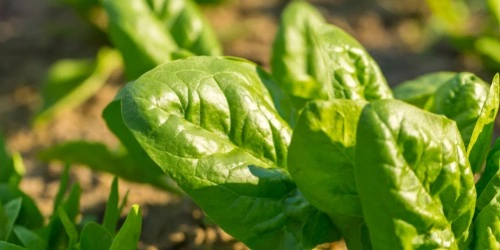
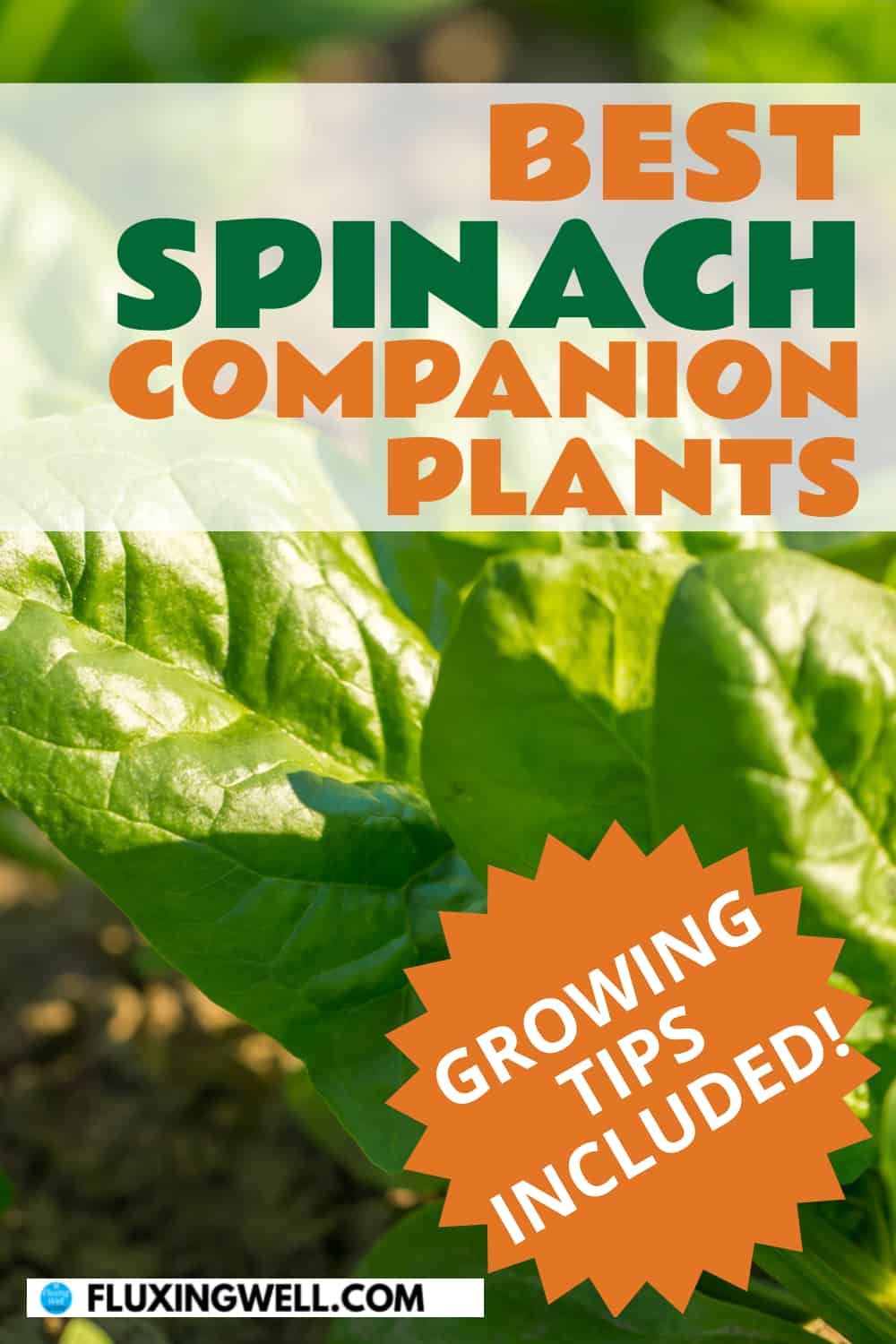

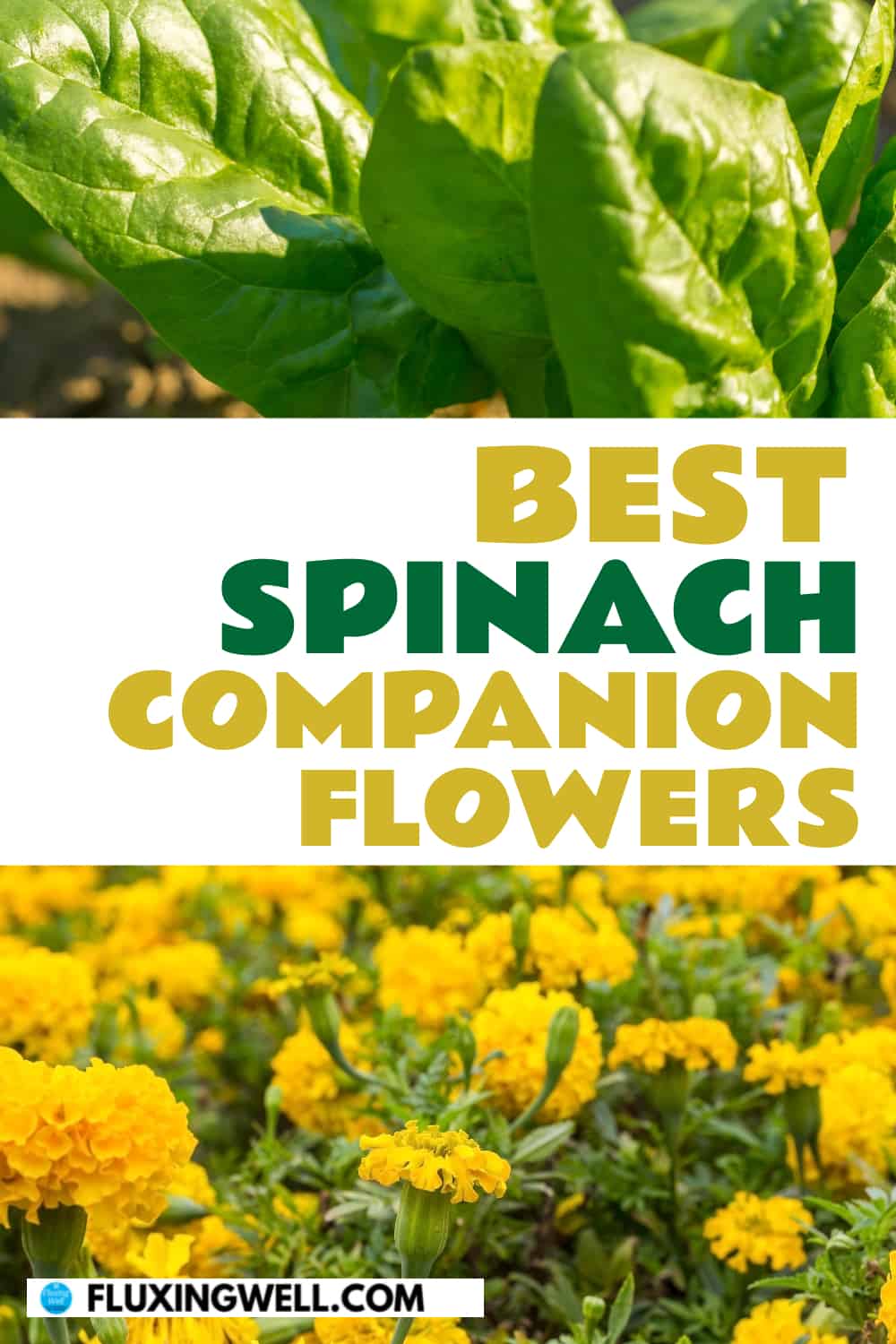
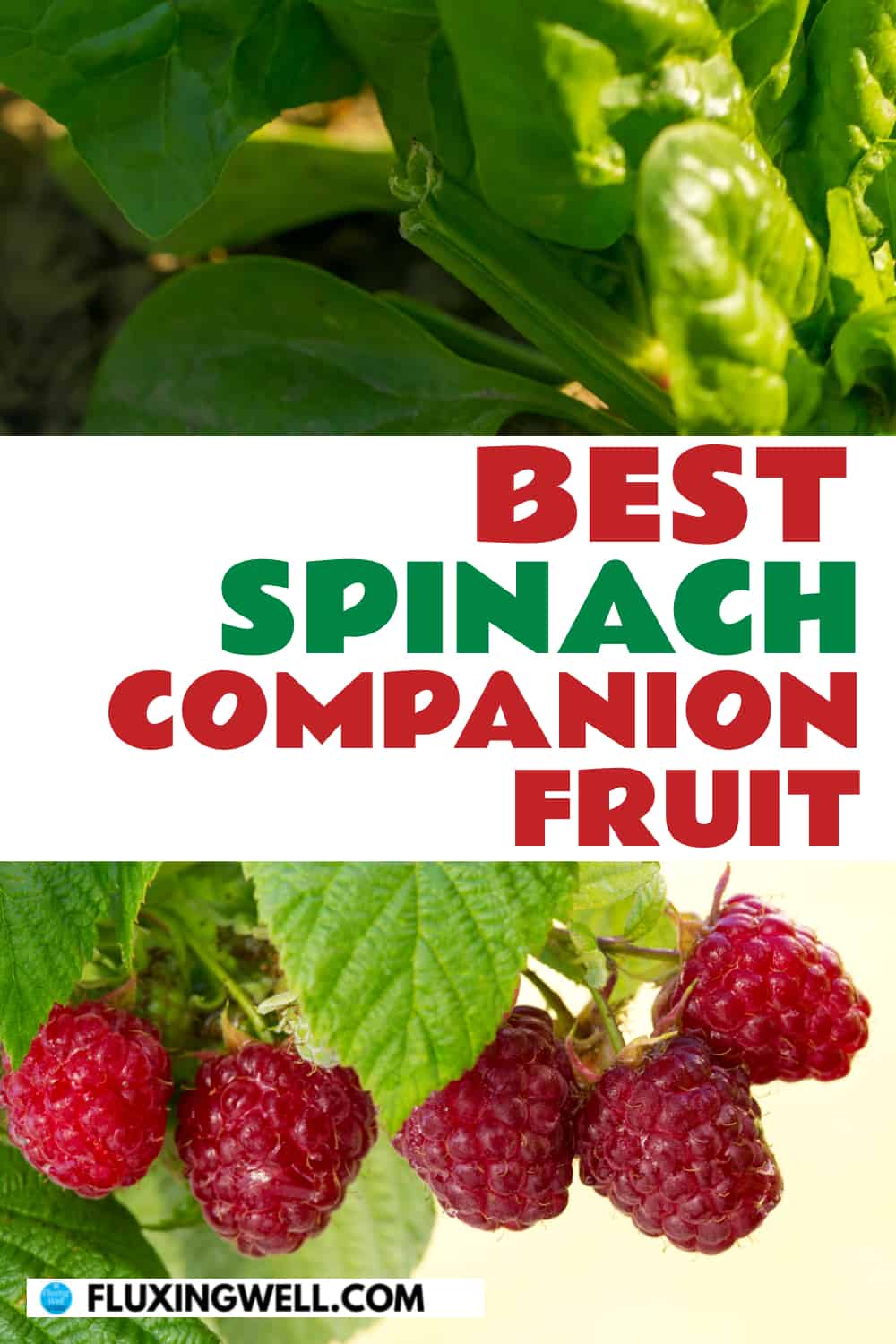
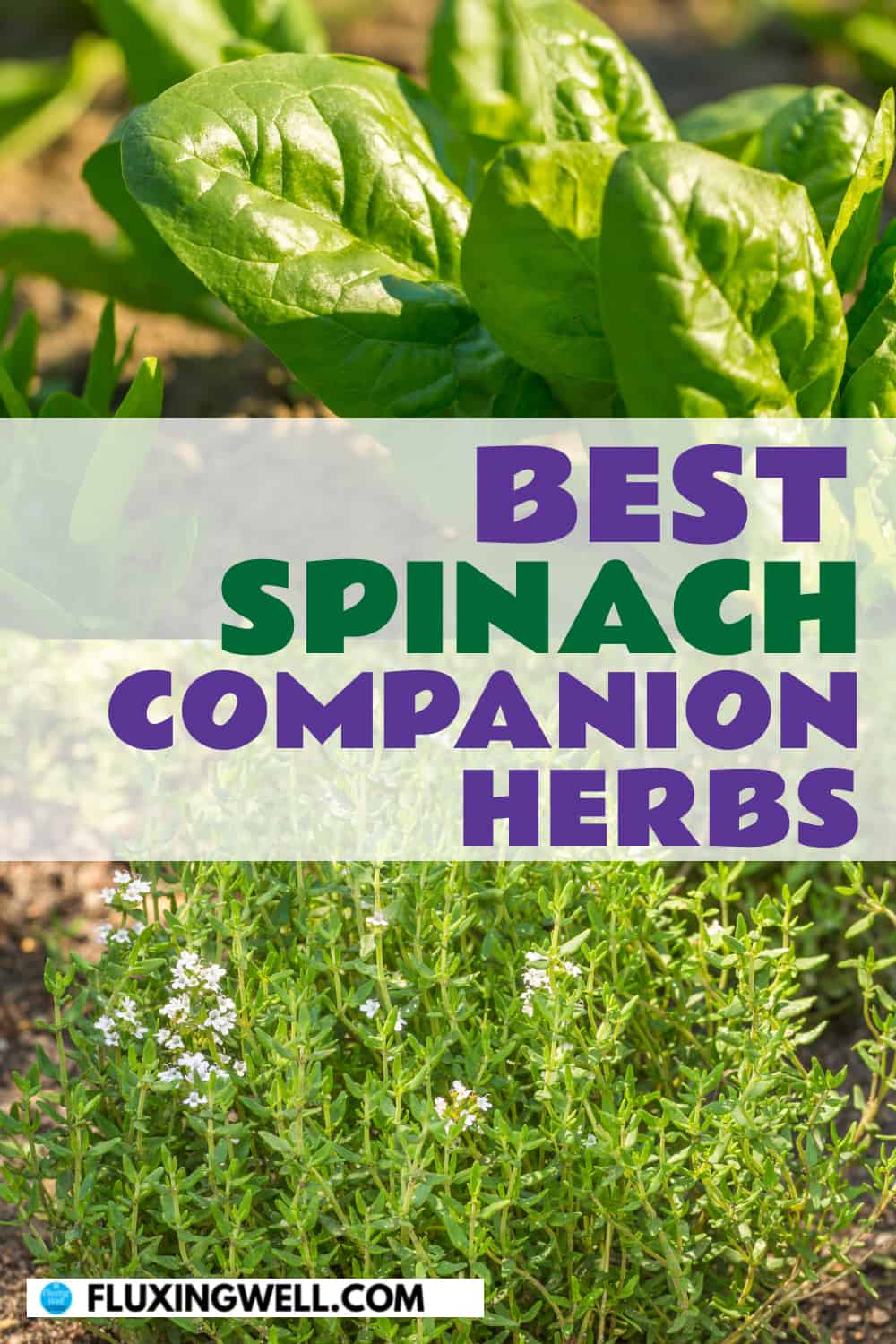
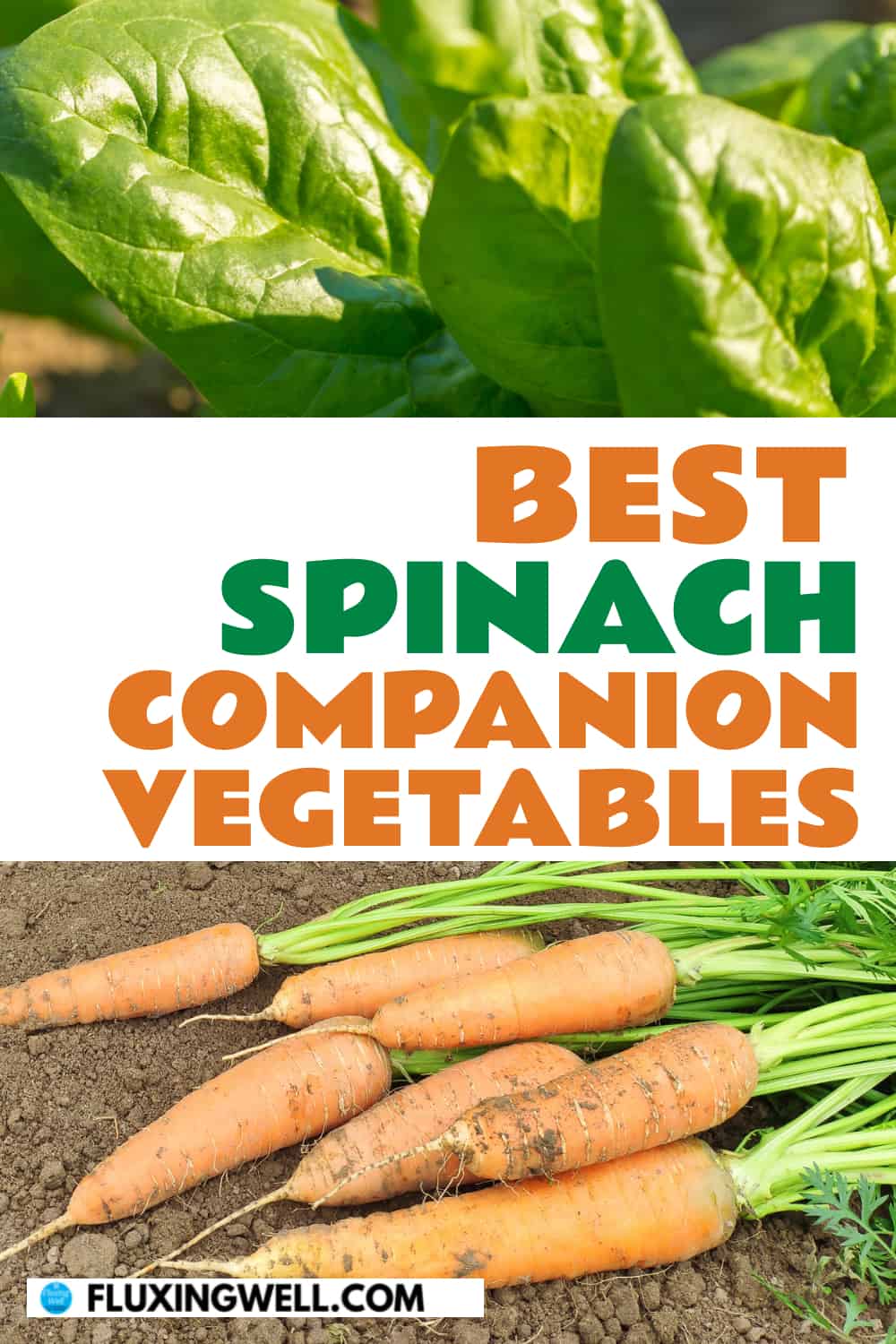

I love growing spinach because I can plant in the fall and it’s one of the first things to come up in the spring. I love having fresh spinach available right from the garden. Thanks for this post on spinach companion plants. Now I’ll have lots of ideas about what to plant with my spinach!
I have never planted spinach in the fall before. I will have to see if that would work in my garden zone. I am glad you found some great spinach companion plants on the list.
This is such a helpful list of spinach companion plants! I am amazed by the variety of companion plants. I love your gardening tips, Lisa!
Thank you so much! I enjoy sharing ideas about companion planting, especially when the plant is easy to grow, as spinach is.
This is such great information on the best spinach companion plants as well as some great growing tips. I had no idea that rose bushes attract beneficial insects such as bees and ladybugs, which can help pollinate spinach plants and control pests. Great information for new growers like me!
I am glad you found a companion plant for spinach that caught your attention. Happy to share ideas about companion planting!
Great list of spinach companion plants! I haven’t grown spinach lately, but now I’m inspired to plant some. Thank you for the spinach companion plant reference chart. Very handy!
You are most welcome. I am glad you like the list of spinach companion plants. Happy planting!
Great list of ideas for planting spinach!
Thank you! Happy companion planting with spinach!